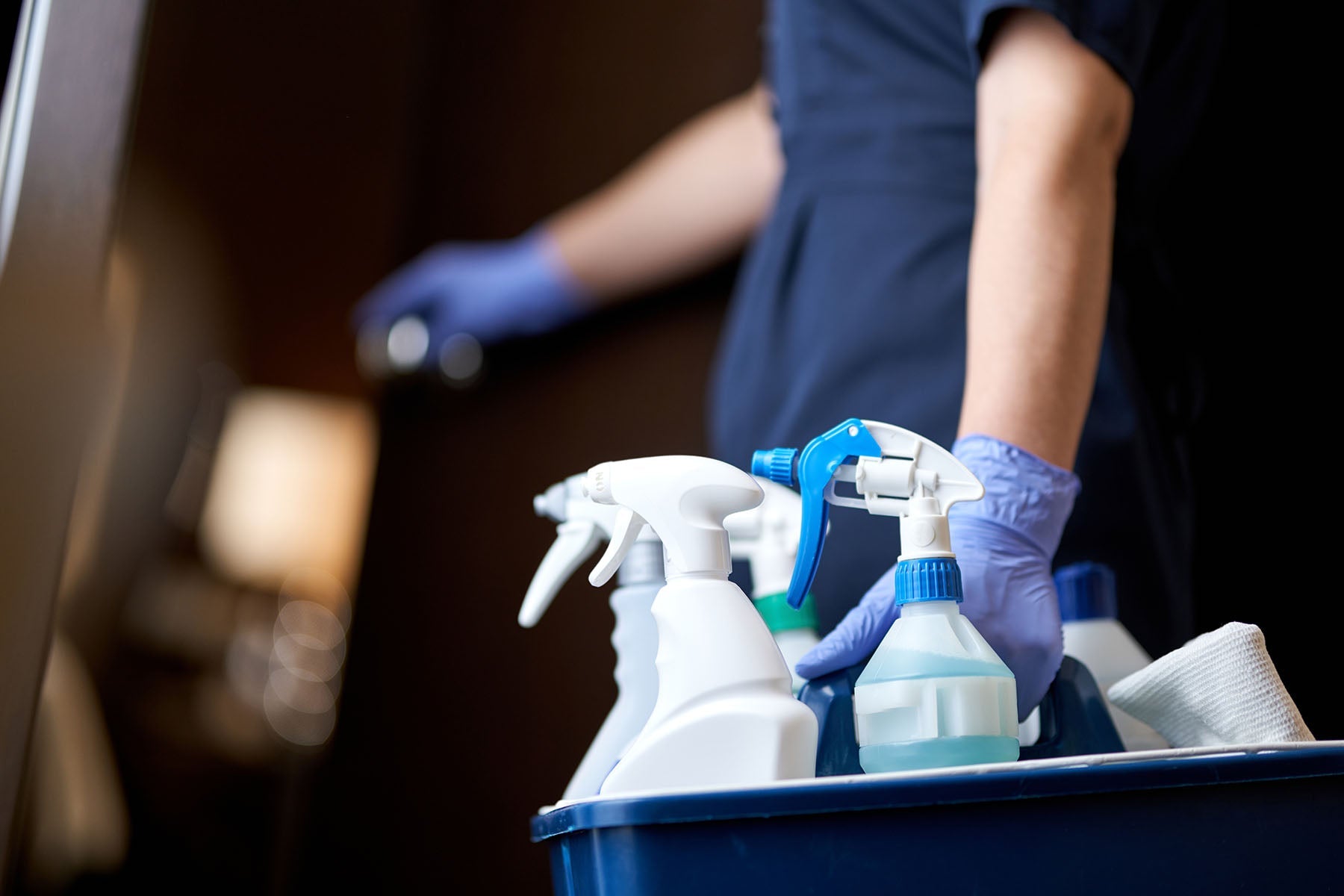
Exploring the Types of Cleaning Chemicals & Their Functions
Why are different cleaning chemicals used for different tasks?
Cleaning chemicals are powerful tools when used correctly, whether they dissolve stubborn stains or sanitise surfaces. For efficient operations, it’s important for everyone on your housekeeping team to understand the types and terminology of the products they’re using.
This article highlights the key components that make up the different cleaning products used in a typical housekeeping team, and explores the wide array of chemicals designed to tackle specific cleaning tasks.
Common Ingredients in Cleaning Chemicals
Alcohols: Often used as a solvent in cleaning products, alcohols dissolve substances such as oils and greases that are otherwise difficult to remove. They also have antimicrobial properties, making them effective disinfectants.
Surfactants: These compounds lower the surface tension of water, enhancing its ability to lift and remove dirt, oils, and stains. They encompass a broad range of substances, such as detergents, emulsifiers, and foaming agents.
Chlorine Bleach (Sodium Hypochlorite): This powerful oxidising agent is used for its ability to kill bacteria, viruses, and fungi, making it an effective disinfectant. It's also commonly used as a whitening agent.
Alkalies (such as Sodium Hydroxide): These substances neutralise acids and break down grease and protein-based dirt. They're common in oven cleaners and drain openers.
Acids (such as Vinegar and Citric Acid): Acids effectively remove mineral deposits, rust, and other substances. They're often found in bathroom cleaners and descalers.
Enzymes: These biological catalysts break down complex stains and odours into simpler substances. They're particularly effective against organic material like blood, sweat, food, and urine.
Fragrances: While not directly contributing to cleaning power, fragrances are used to provide a pleasant smell post-cleaning, contributing to the perception of cleanliness.
Types of Cleaning Chemicals
Abrasives: These are gritty cleaners used to scrub surfaces manually. They're effective for removing stubborn dirt, stains, and tarnish. They come in various forms like powders, liquids, and even embedded in sponges or on cleaning cloths.
Detergents: Detergents are surfactant-based cleaners, such as dishwash, that are highly versatile and used for a wide variety of cleaning tasks. They work by breaking down and removing dirt and oils from surfaces.
Acid Cleaners: Acidic cleaners are highly effective at removing mineral deposits, rust, and other hard water stains. Examples include bathroom and toilet bowl cleaners, which are beneficial for descaling appliances.
Disinfectants: These include disinfectant multi-surface cleaners and some handwashes, and are cleaners with antimicrobial agents used to kill bacteria, viruses, fungi, and other microorganisms. They're crucial for maintaining sanitary conditions, especially in healthcare and food preparation settings.
Solvents: Solvent cleaners are typically used for removing oily or sticky substances. They work by dissolving the undesired material, making it easier to wipe away. Examples include degreasers and spot removers.
Enzyme Cleaners: Enzyme cleaners utilise biological compounds to break down dirt and stains. They're particularly effective against organic materials like blood, sweat, and food stains.
Sanitisers: Similar to disinfectants, sanitisers reduce the number of pathogens on a surface to safe levels as judged by public health standards. They are frequently used in food service and hospitality industries.
Deodorisers: Deodorisers combat unpleasant odours by neutralising or masking them. They're commonly found in air fresheners, carpet and upholstery cleaners.
Polishes: Polishes typically contain waxes, oils, or solvents and enhance the appearance of surfaces by providing shine and protection against future soiling. They're often used on furniture, floors, and metal surfaces.
Bleaches: Bleach is a general term for chemicals that lighten or whiten and can also be used to disinfect. The most common type is chlorine bleach (sodium hypochlorite). Another effective bleaching agent is hydrogen peroxide, which is also frequently used.
Explore Our Range
Boost your cleaning with the right chemicals. Explore our essential range and ensure your housekeepers get the perfect clean every time.

